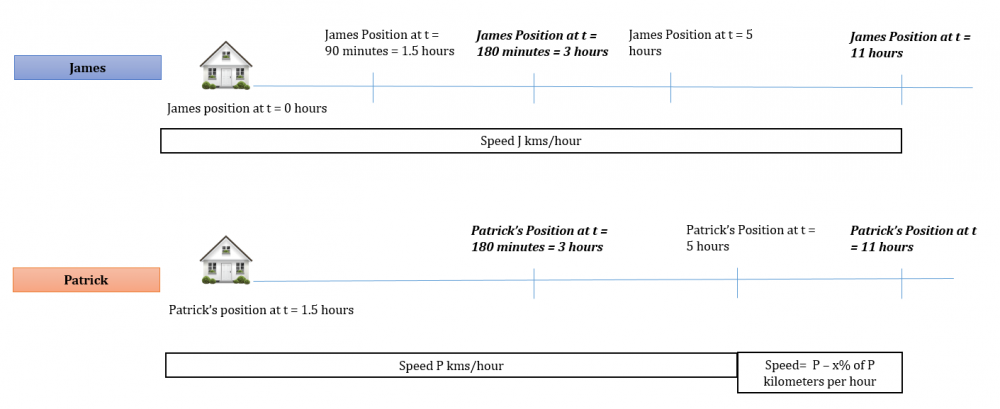Events & Promotions
|
|

GMAT Club Daily Prep
Thank you for using the timer - this advanced tool can estimate your performance and suggest more practice questions. We have subscribed you to Daily Prep Questions via email.
Customized
for You
Track
Your Progress
Practice
Pays
Not interested in getting valuable practice questions and articles delivered to your email? No problem, unsubscribe here.
- Nov 20
07:30 AM PST
-08:30 AM PST
Learn what truly sets the UC Riverside MBA apart and how it helps in your professional growth - Nov 20
01:30 PM EST
-02:30 PM IST
Learn how Kamakshi achieved a GMAT 675 with an impressive 96th %ile in Data Insights. Discover the unique methods and exam strategies that helped her excel in DI along with other sections for a balanced and high score. - Nov 19
12:30 PM EST
-01:30 PM EST
Learn how Keshav, a Chartered Accountant, scored an impressive 705 on GMAT in just 30 days with GMATWhiz's expert guidance. In this video, he shares preparation tips and strategies that worked for him, including the mock, time management, and more - Nov 22
11:00 AM IST
-01:00 PM IST
Do RC/MSR passages scare you? e-GMAT is conducting a masterclass to help you learn – Learn effective reading strategies Tackle difficult RC & MSR with confidence Excel in timed test environment - Nov 23
11:00 AM IST
-01:00 PM IST
Attend this free GMAT Algebra Webinar and learn how to master the most challenging Inequalities and Absolute Value problems with ease. - Nov 24
07:00 PM PST
-08:00 PM PST
Full-length FE mock with insightful analytics, weakness diagnosis, and video explanations! - Nov 25
10:00 AM EST
-11:00 AM EST
Prefer video-based learning? The Target Test Prep OnDemand course is a one-of-a-kind video masterclass featuring 400 hours of lecture-style teaching by Scott Woodbury-Stewart, founder of Target Test Prep and one of the most accomplished GMAT instructors.
Kudos
Bookmarks
D
Be sure to select an answer first to save it in the Error Log before revealing the correct answer (OA)!
Difficulty:
 95%
(hard)
95%
(hard)
Question Stats:
51% (03:19) correct 49%
(03:26)
wrong
49%
(03:26)
wrong  based on 270
sessions
based on 270
sessions
History
Date
Time
Result
Not Attempted Yet
James started from his home and drove eastwards at a constant speed. Exactly 90 minutes after James stated from his home, his brother Patrick started from the same point and drove in the same direction as James did at a different constant speed. Patrick overtook James exactly 90 minutes after Patrick started his journey and then continued driving at the same speed for another 2 hours. By what percentage should Patrick reduce his speed so that James could catch up with Patrick in exactly 8 hours after Patrick overtook James?
A. 25%
B. 33%
C. 50%
D. 67%
E. 75%
A. 25%
B. 33%
C. 50%
D. 67%
E. 75%
Kudos
Bookmarks
EgmatQuantExpert
Hi
Since the distance covered by James in (90+90) minutes is same as Patrick in 90 minutes, speed of P is TWICE that of J..
Now it will be easier to give a number to each..
Let J's speed be 1kph, so P's speed will be 2kph....
We are looking for both to meet after 8 hour..
So in 8 HR , J will travel at constant rate @1kph= 8*1=8km..
P travels at 2kph for 2 hrs so travels 4km...
Remaining Kms=8-4=4...
So Phase to travel 4km in remaining 6hr...
So speed becomes 4/6=2/3kph...
Reduction=2-2/3=4/3
%=(4/3)/2*100=4/6*100=200/3=66.667%
EgmatQuantExpert pl correct your choices as you are asking for "meeting in EXACT 8 hrs"..
General Discussion
Originally posted by EgmatQuantExpert on 22 Jan 2017, 01:26.
Last edited by EgmatQuantExpert on 27 Mar 2017, 05:51, edited 1 time in total.
Last edited by EgmatQuantExpert on 27 Mar 2017, 05:51, edited 1 time in total.
Kudos
Bookmarks
The official solution has been posted. Looking forward to a healthy discussion..
















